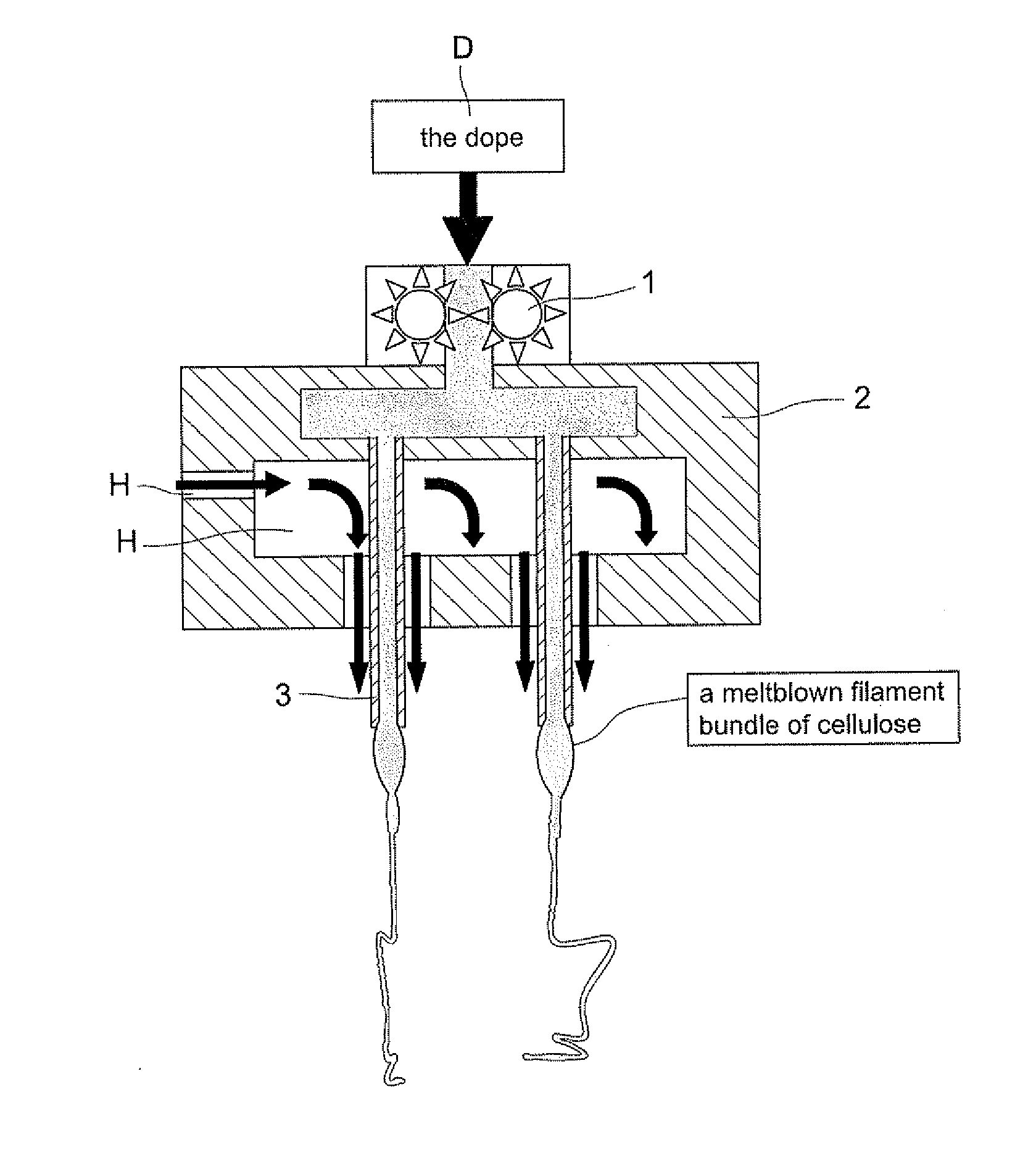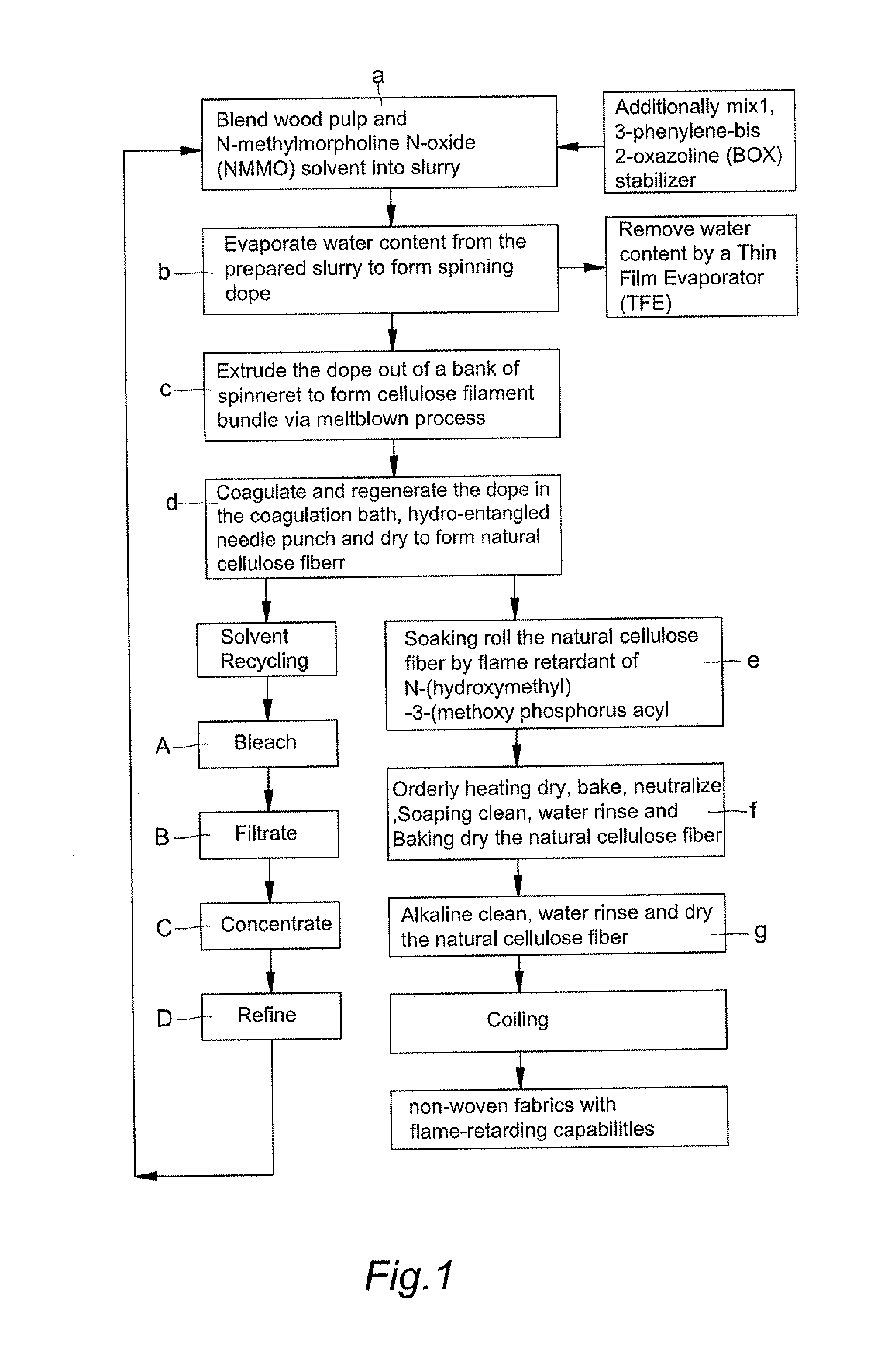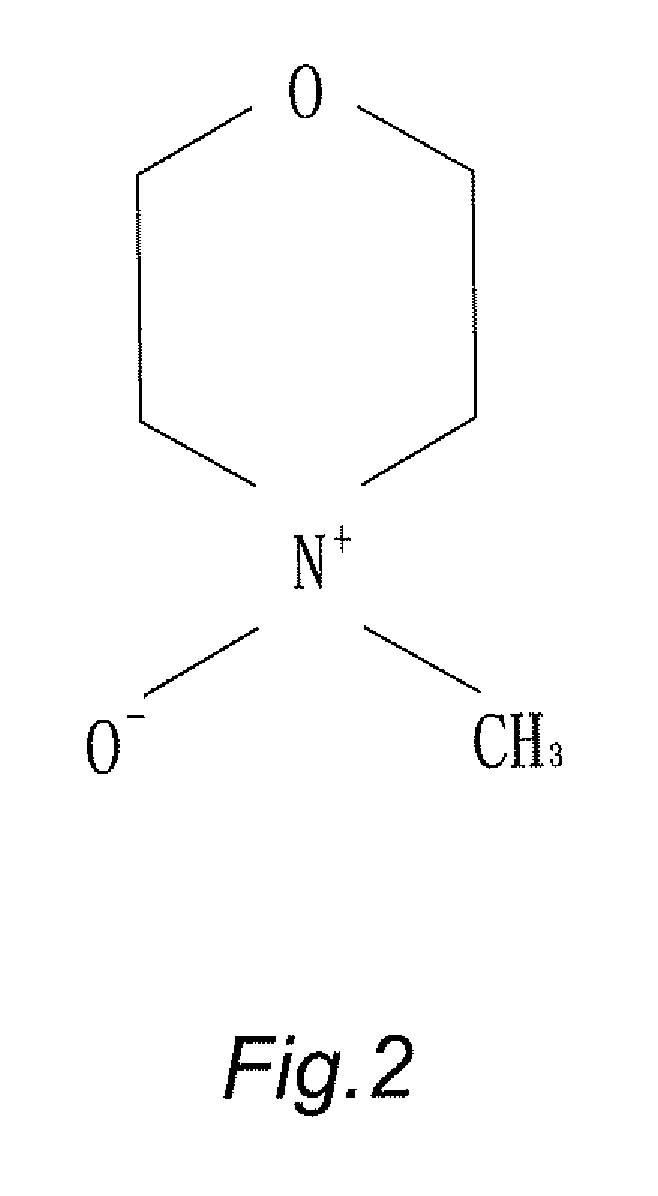Meltblown process for producing non-woven fabrics with flame-retarding capability from natural cellulose
a technology of flame retardant and non-woven fabrics, which is applied in the field of meltblown process for producing non-woven fabrics with flame retardant capability from natural cellulose, can solve the problems of affecting the natural environment, wasting spunlaid non-woven after being used, and incurring a substantial burden on the natural environment, so as to reduce the cost of solvent recycling and reduce the cost of processing. simple and effective
- Summary
- Abstract
- Description
- Claims
- Application Information
AI Technical Summary
Benefits of technology
Problems solved by technology
Method used
Image
Examples
embodiment 1
Specimens in Number D1-D12 and F1-F12
[0035]Blend cellulose of wood pulp in degree of polymerization (DP) of 650 with solvent of N-methylmorpholine N-oxide (NMMO) to form into slurry, next additionally mix stabilizer of 1,3-phenylene-bis 2-oxazoline (BOX) and anti-decline additive for degree of polymerization (DP) in respectively different mixed proportion into prepared slurry. Then, evaporate extra water content from the prepared slurry by a Thin Film Evaporator (TFE) under temperature in range between 80 degree of Celsius and 120 degree of Celsius (80° C.-120° C.) heating for 5 minutes to remove extra water content so that a spinning dope is formed with water percentage content in range between 5%-13%. The composition table of dope for different specimens indicated D1-D6 is shown in Table-1. By meltblown process, the dope is extruded out of a bank of spinneret to form cellulose filament bundle; By means of ejecting mist aerosol of water, the filament bundle is coagulated for regene...
embodiment 2
Specimens in Number D1-D12 and F1-F12
[0036]Blend cellulose of wood pulp in degree of polymerization (DP) of 1050 with solvent of N-methylmorpholine N-oxide (NMMO) to form into slurry, next additionally mix stabilizer of 1,3-phenylene-bis 2-oxazoline (BOX) and anti-decline additive for degree of polymerization (DP) in respectively different mixed proportion into prepared slurry. Then, evaporate extra water content from the prepared slurry by a Thin Film Evaporator (TFE) under temperature in range between 80 degree of Celsius and 120 degree of Celsius (80° C.-120° C.) heating for 5 minutes to remove extra water content so that a spinning dope is formed with water percentage content in range between 5%-13%. The composition table of dope for different specimens indicated D1-D12 is shown in Table-1. By meltblown process, the dope is extruded out of a bank of spinneret to form cellulose filament bundle; By means of ejecting mist aerosol of water, the filament bundle is coagulated for rege...
embodiment 3
Test for Flame Retarding Capability
[0037]Blend cellulose of wood pulp in degree of polymerization (DP) of 650 and 1050 with solvent of N-methylmorpholine N-oxide (NMMO) to form into slurry, next additionally mix stabilizer of 1,3-phenylene-bis 2-oxazoline (BOX) and anti-decline additive for degree of polymerization (DP) in respectively different mixed proportion into prepared slurry. Then, evaporate extra water content from the prepared slurry by a Thin Film Evaporator (TFE) under temperature in range between 80 degree of Celsius and 120 degree of Celsius (80° C.-120° C.) heating for 5 minutes to remove extra water content so that a spinning dope is formed with water percentage content in range between 5%-13%. By meltblown process, the dope is extruded out of a bank of spinneret to form cellulose filament bundle; By means of ejecting mist aerosol of water, the filament bundle is coagulated for regeneration, after post treatments of water rinsing, hydro-entangled needle punching and ...
PUM
| Property | Measurement | Unit |
|---|---|---|
| temperature | aaaaa | aaaaa |
| degree of polymerization | aaaaa | aaaaa |
| temperature | aaaaa | aaaaa |
Abstract
Description
Claims
Application Information
 Login to View More
Login to View More - R&D
- Intellectual Property
- Life Sciences
- Materials
- Tech Scout
- Unparalleled Data Quality
- Higher Quality Content
- 60% Fewer Hallucinations
Browse by: Latest US Patents, China's latest patents, Technical Efficacy Thesaurus, Application Domain, Technology Topic, Popular Technical Reports.
© 2025 PatSnap. All rights reserved.Legal|Privacy policy|Modern Slavery Act Transparency Statement|Sitemap|About US| Contact US: help@patsnap.com



